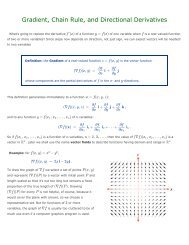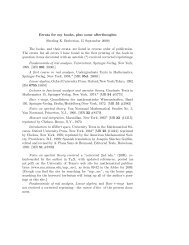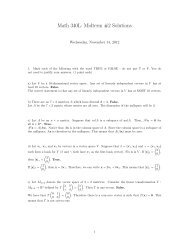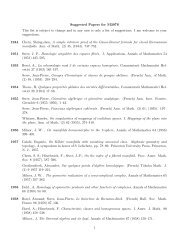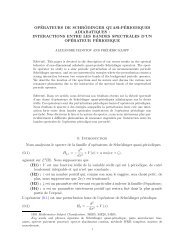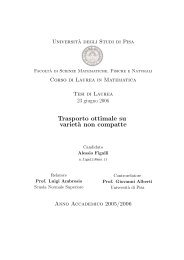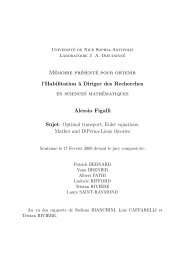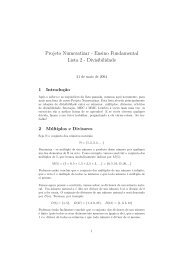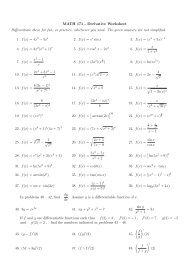Group-Theoretic Partial Matrix Multiplication - Department of ...
Group-Theoretic Partial Matrix Multiplication - Department of ...
Group-Theoretic Partial Matrix Multiplication - Department of ...
You also want an ePaper? Increase the reach of your titles
YUMPU automatically turns print PDFs into web optimized ePapers that Google loves.
(a) Bottom Aliasing<br />
(b) Top-Easy Aliasing<br />
(c) Top-Hard Aliasing<br />
Figure 3: A visualization <strong>of</strong> the three types <strong>of</strong> aliasing in the construction given<br />
in Section 4.2.<br />
<strong>of</strong> maximizing the dot product when all the aliasing is to be taken care <strong>of</strong><br />
by the left and right matrices). We show that PARTIAL-TENSOR-ONES is<br />
NP-complete via a reduction from INDEPENDENT-SET, a well-known NPcomplete<br />
problem.<br />
Theorem 5.1. PARTIAL-TENSOR-ONES is NP-complete<br />
Pro<strong>of</strong>. An instance <strong>of</strong> INDEPENDENT-SET consists <strong>of</strong> (some encoding <strong>of</strong>) a<br />
graph and an integer k. Let G = (V, E) be this graph. We will generate an<br />
instance <strong>of</strong> PARTIAL-TENSOR-ONES. Let m = p = |V | and n = 1. For each<br />
edge (vi, vj), add constraints <strong>of</strong> the form ((1, i), (j, 1)) and ((j, 1), (1, i)).<br />
Suppose there is an independent set <strong>of</strong> size k. Then there is an I, J such that<br />
f(I, J) = k. For each vi in the independent set, allow (i, 1) and (1, i) to be free<br />
and all other entries in the two vectors to be zeroed. It’s clear that f(I, J) = k,<br />
and every constraint is fulfilled because the constraints correspond exactly to<br />
the edges, so no two free variables appear in the same constraint.<br />
From an aliasing pattern with f(I, J) = k, we can construct an independent<br />
set <strong>of</strong> the same size. If any (1, i) is free in I while (i, 0) is zeroed in J, modify<br />
I to set (1, i) to zero. Then the value <strong>of</strong> f is unchanged, but all pairs are<br />
either both free or both 0. This is the sort <strong>of</strong> aliasing pattern one gets from<br />
the previous reduction, and we can easily run the argument <strong>of</strong> the previous<br />
paragraph backwards to find an independent set in G <strong>of</strong> size k.<br />
Since there is an independent set <strong>of</strong> size k if and only if there are some I, J<br />
such that f(I, J) = k, and the reduction is clearly polynomial time, PARTIAL-<br />
TENSOR-ONES is NP-hard.<br />
12



